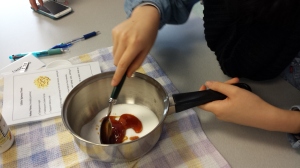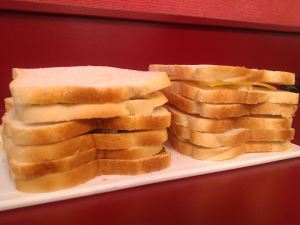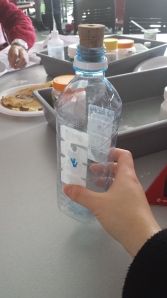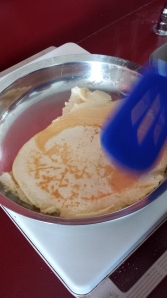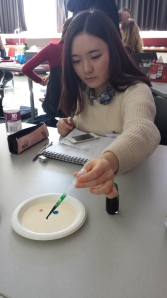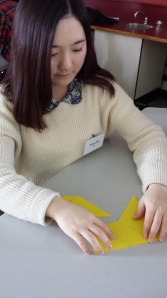Artefact and learning description for States of Matter
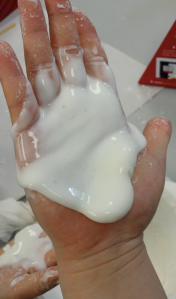

When I entered the science workshop last week, I was surprised that lots of activity tables were prepared for us. Every activity was fabulous but the ‘Oobleck’ activity made me interesting. It was made of cornstarch and water, and it is a type of non-Newtonian fluid called a dilatant according to Wikipedia. When I touched oobleck that was in a basket, it was like the harden clay but when I put on my hand, It changed into the liquid and ooze out of my hand. Also, when I force it, it acted like a solid.
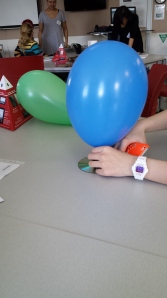
Youtube Video –> http://www.youtube.com/watch?v=JFLfO7XhSqk&feature=youtu.be
The second activity was ‘Hovercraft’. This activity was needed a CD that glued with a push-up water bottle top and a balloon. I inflated the balloon and fix it over the valve in the middle of the CD and then placed the hovercraft on the table. When I pulled the bottle valve to the open position, it moved softly but quickly on the table like a spacecraft! I realised that this was because the air in the balloon.
Half-page reflection on States of Matter
Through these activities, I seem to become close with the States of Matter more. In the first activity, I was amazing at oobleck that can be changed to the solid when it was forced and the liquid when it was on my hand. This process is only applied to non-Newtonian fluid, which is what I learnt through this activity. During this activity I thought that Oobleck would be a perfect science experiment for children, because children are usually visually stimulated, excited and interested so they can easily learn the states of matter through Intriguing activity, ‘Oobleck’. Children would realise textures and features of solid and liquid through this activity. If the first activity only talked about solid and liquid, the second activity will talk about gas. Children do not feel an interest in the gas because the gas is invisible. However, if the air were ‘visible’, children would wonder about the air. Therefore the Hovercraft would be an excellent activity for children. I was very impressive that CD hovercraft moved like a spacecraft, and I learnt that this is because of the air in the balloon. As air flew downward and out of the balloon, it built up air pressure under the CD. That air pressure lifted the whole hovercraft off the table as air began to escape evenly all around the edge of the plate. When children do this activity, I could explain that the air is exist even it is invisible through the balloon. They would be amazed about moving Hovercraft and they would show interests on the gas then, they are in process of learning of states of matter.
Resource for States of Matter, and reason chosen
http://www.frugalteacher.com/2011/09/life-cycle-of-snowman.html
I would like to use this activity to teach states of Matter to young children because three states are clearly shown on the activity and I personally think that the ice is the best resource for children to learn the states of matter. Children would be amazed at the ice in the balloon and would show curiosity about what happened. Also, children will be able to watch melting process through the ice snowman, so far children are learnt melting and solidification. Lastly, when the ice is “cooked”, it changes to gas. Through this activity, children would realise that the temperature change for each process and able to develop their understanding of solid, liquid and gas.


